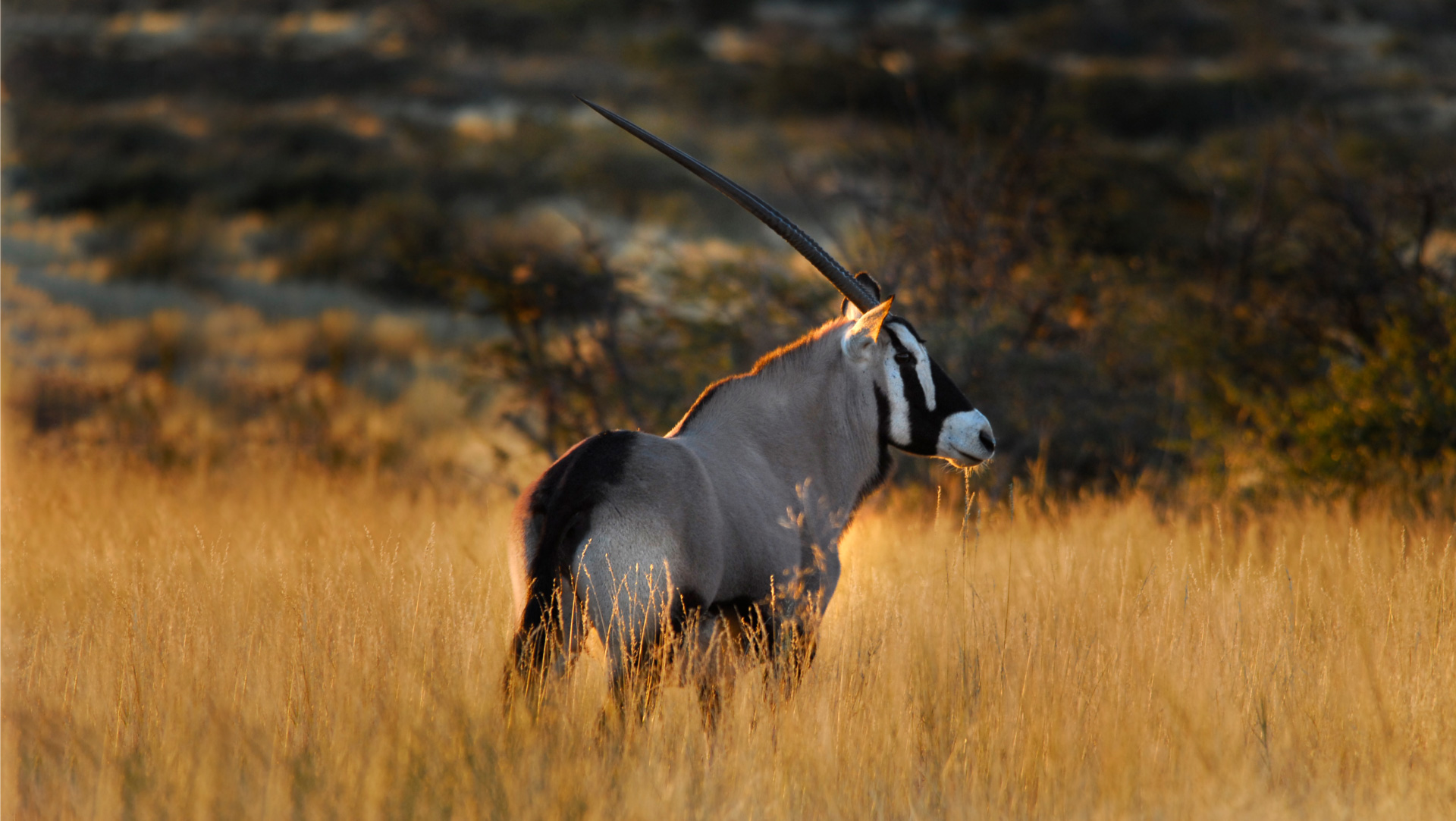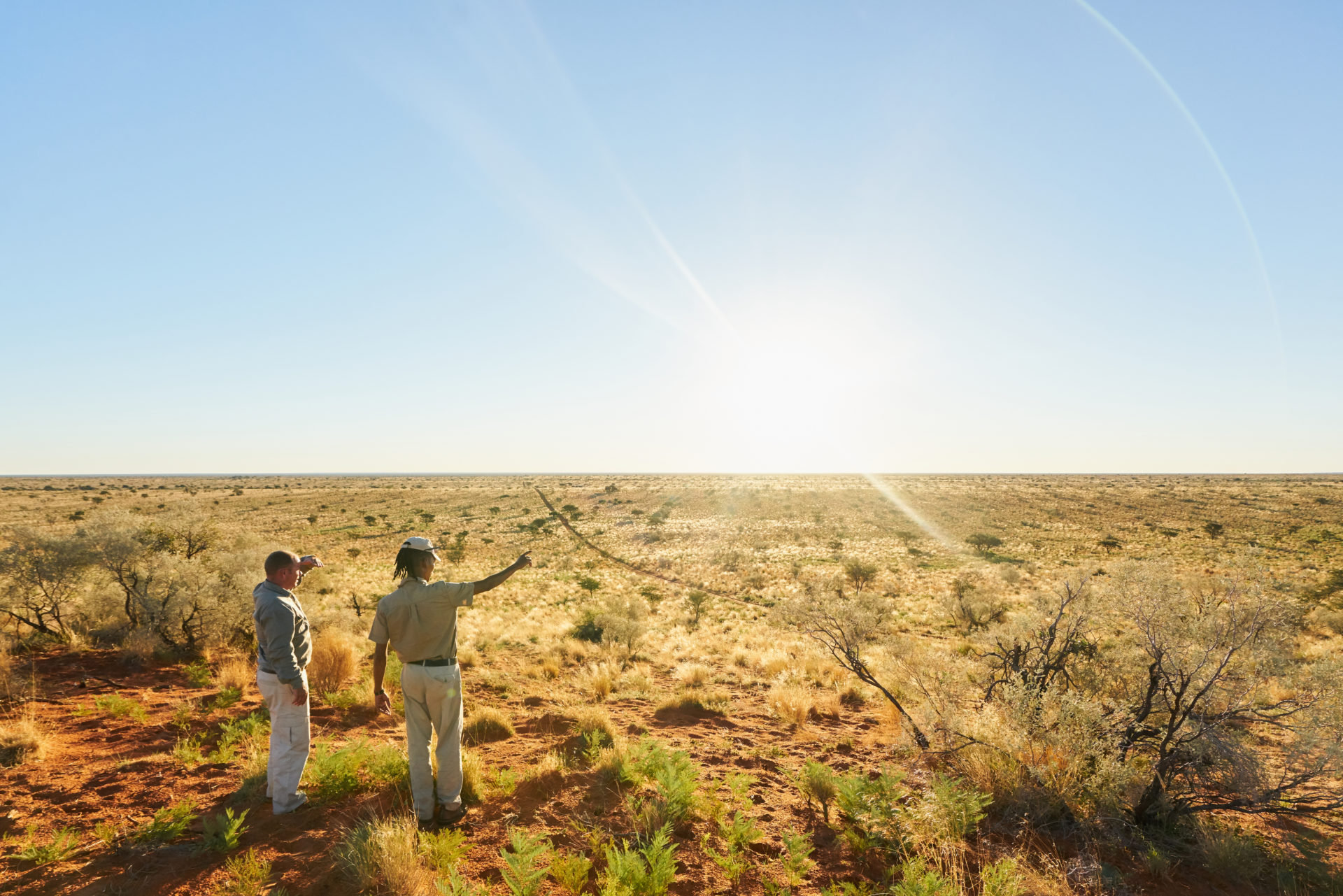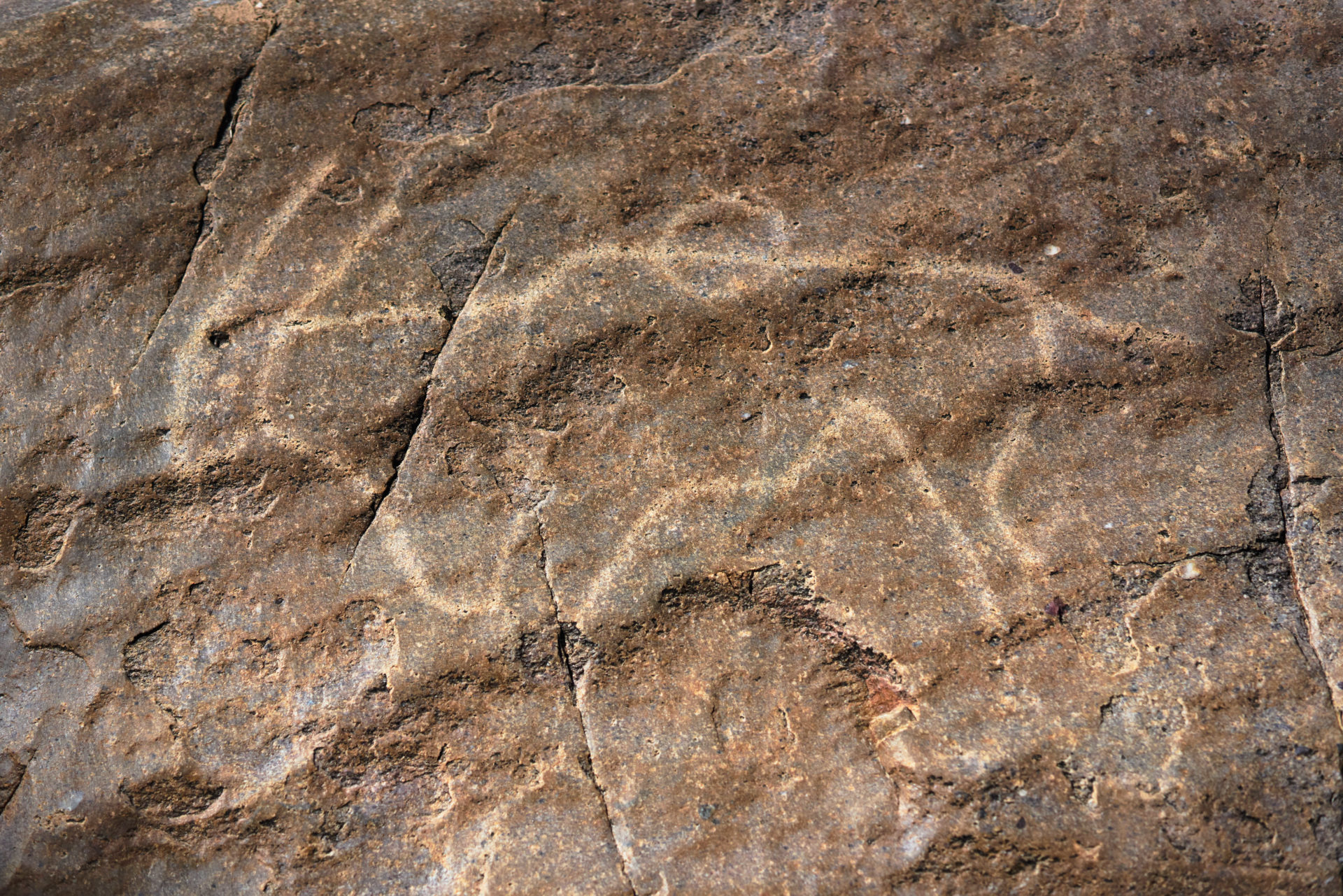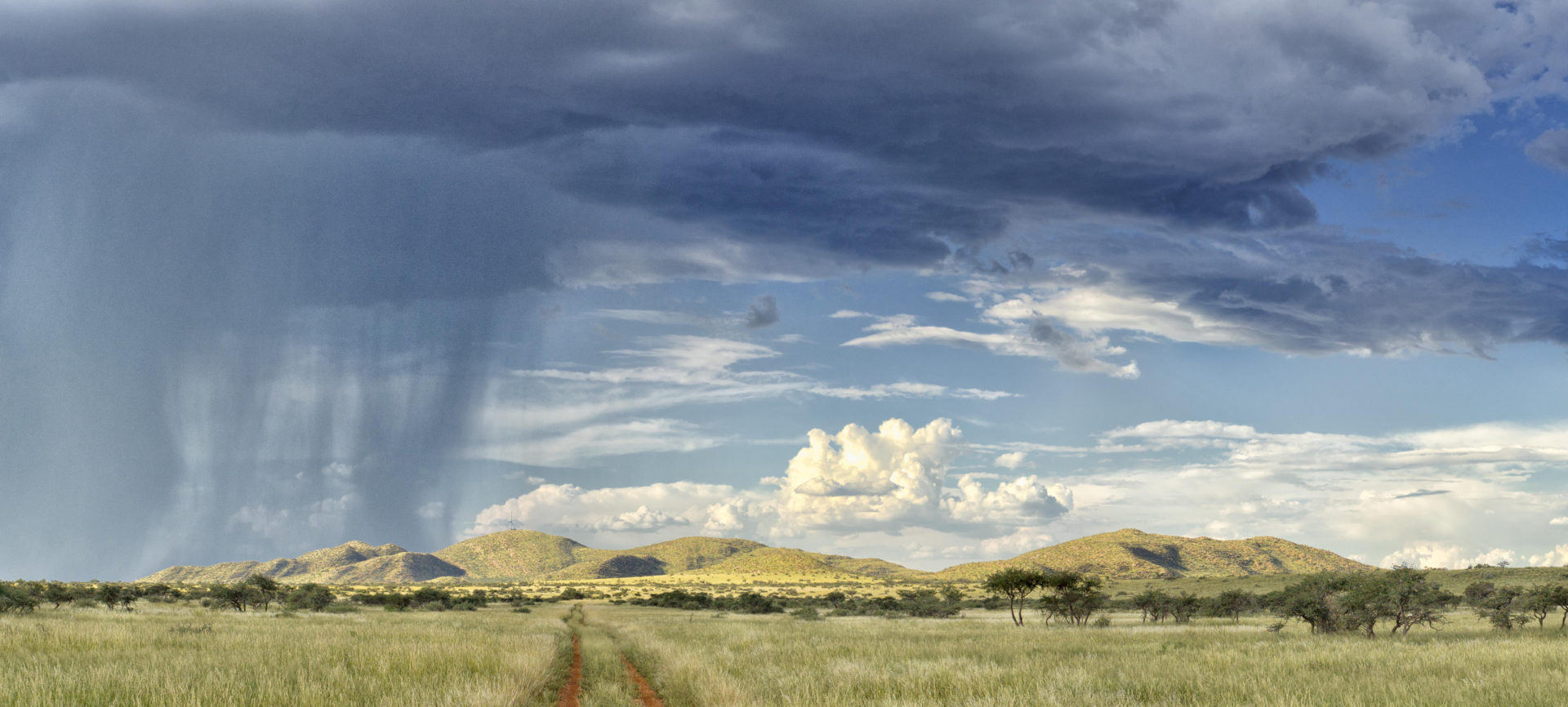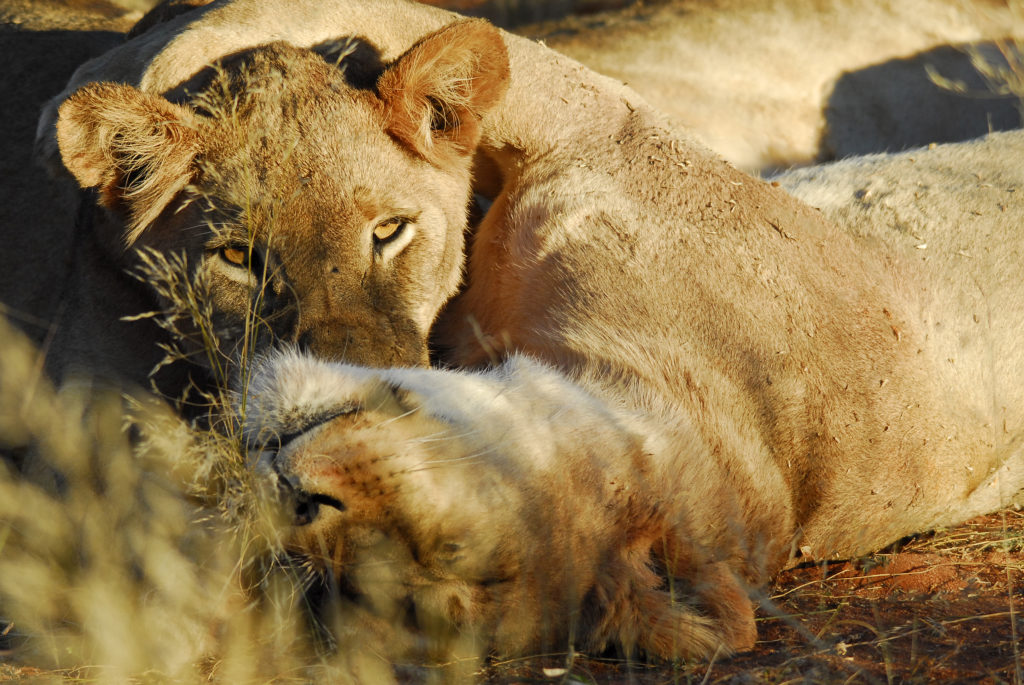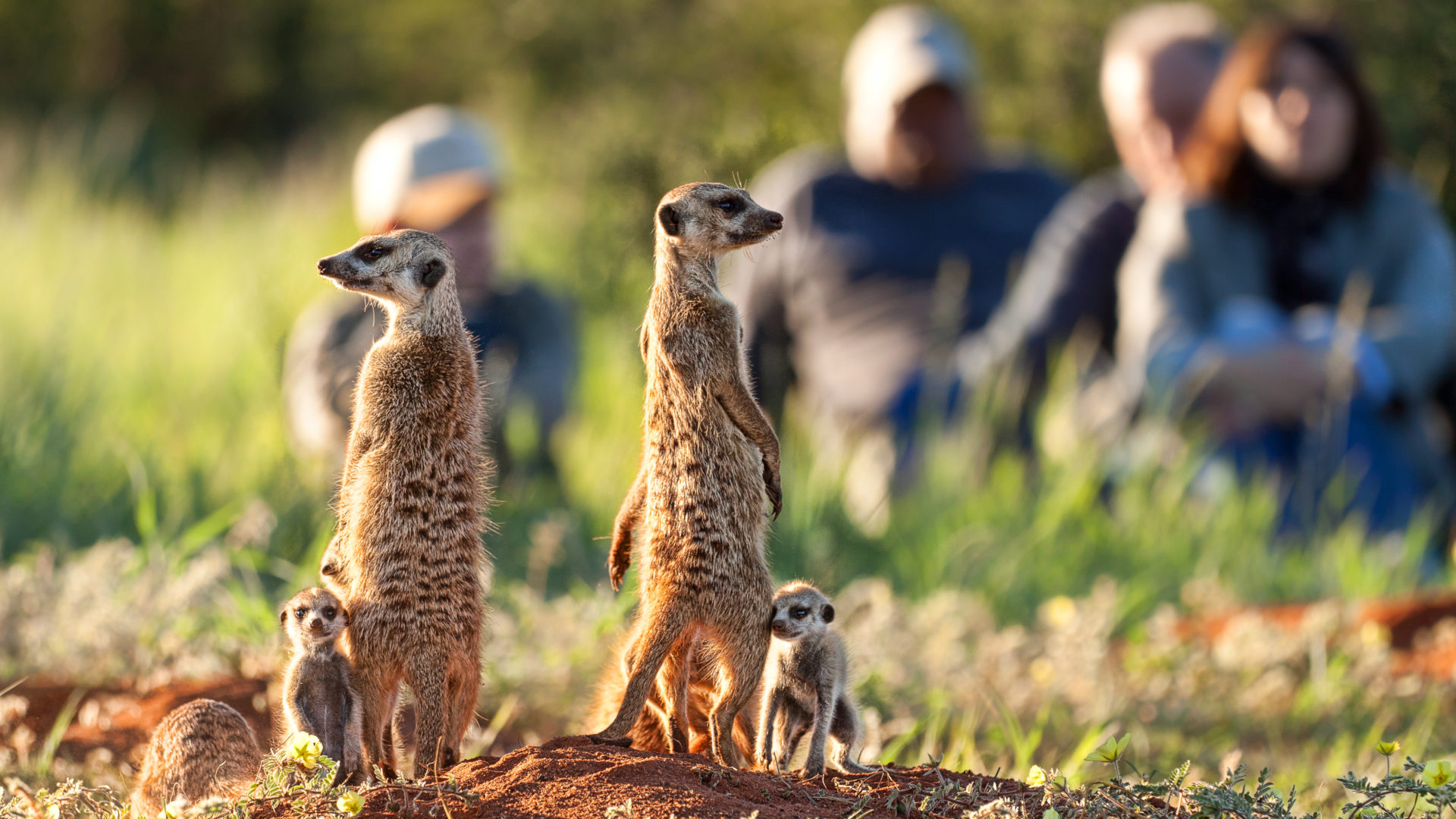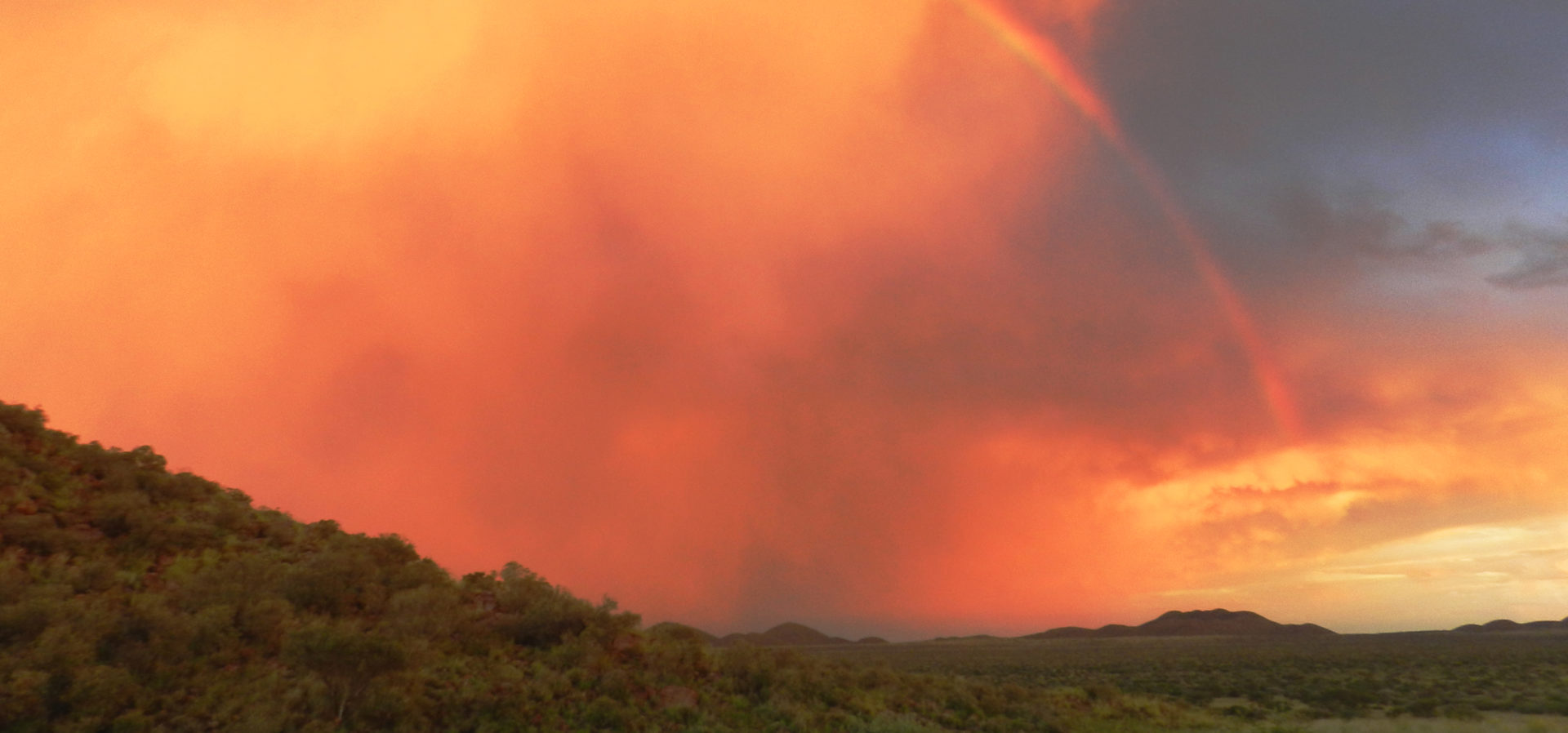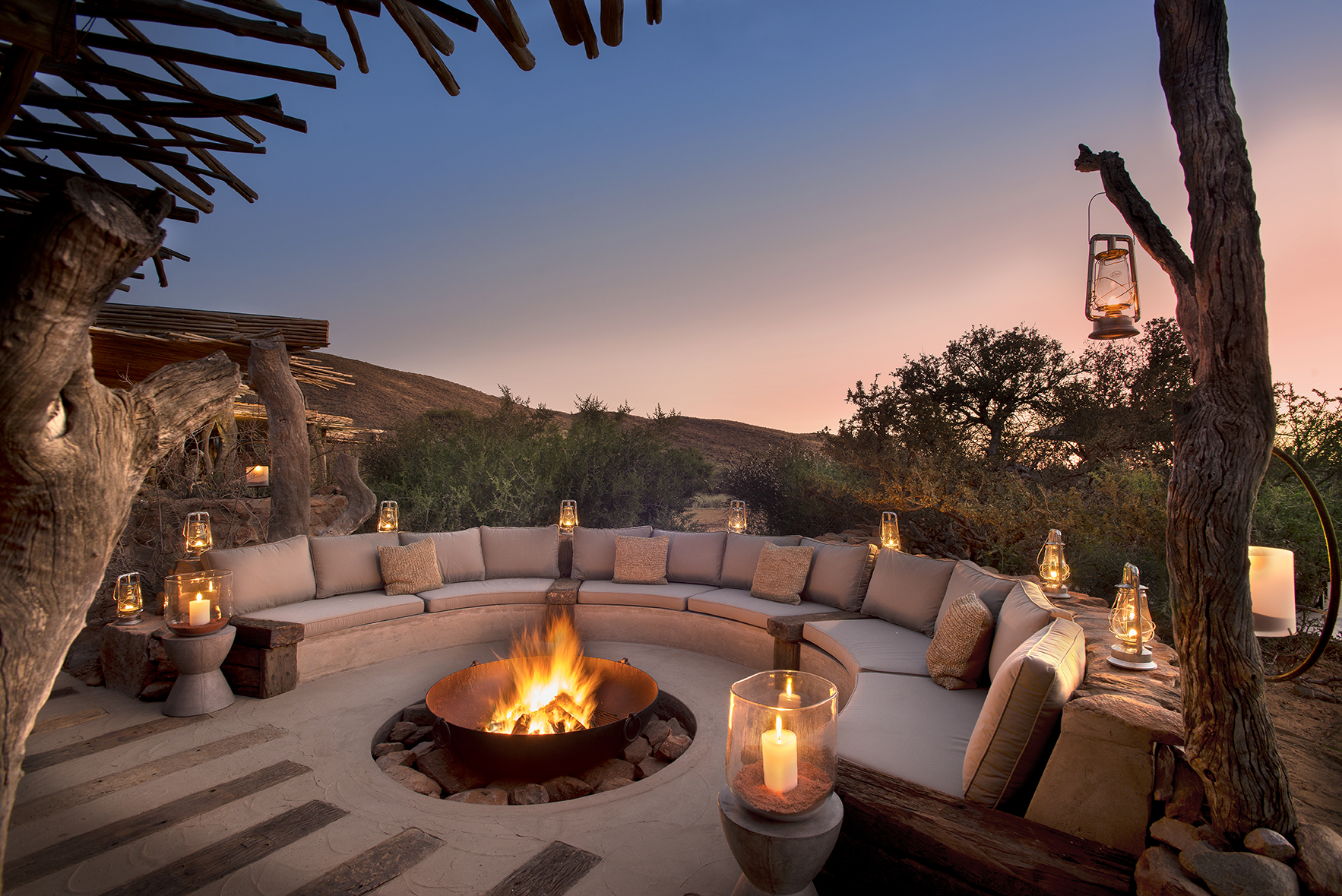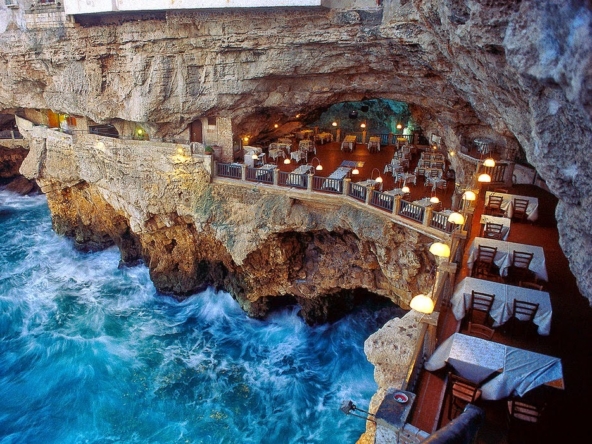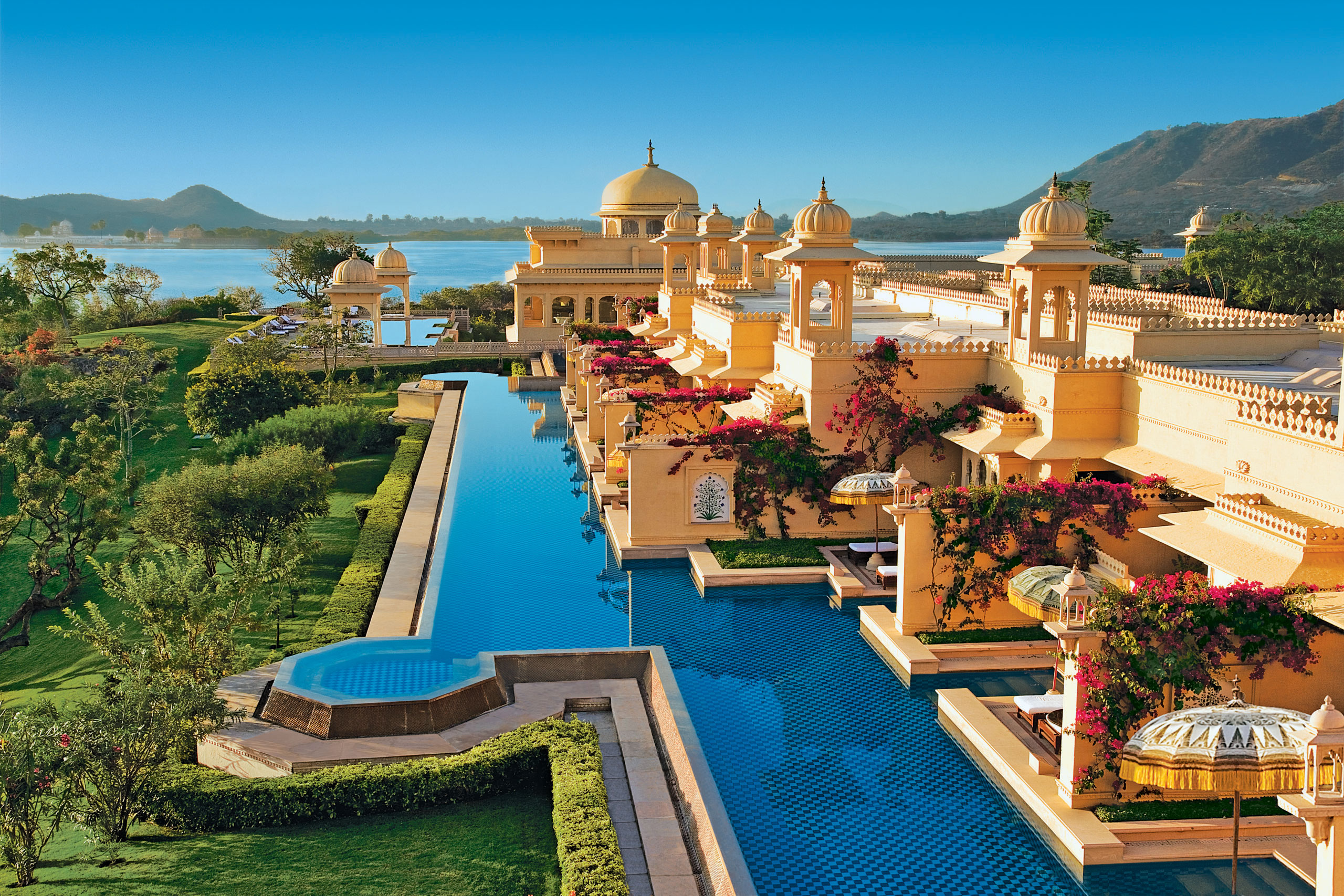A journey to reconnect with the richness of the earth
Situated in the Savannah Biome, Tswalu Kalahari Reserve lies in a transition zone between the true Kalahari ecotype and arid savannah. The undulating dunes are punctuated by the Korannaberg hills which contribute to greater habitat diversity than elsewhere in the Kalahari.
Tswalu Kalahari Reserve is an endless bounty of red sand dunes that are dotted with acacias which provides a safe haven for many of the rare and endangered species that call Africa home.
Tswalu is a vast, magical land of infinite possibility, with sweeping vistas and a liberating sense of space. The green Kalahari is nature at its most diverse and surprising, and to spend time here is to be touched by exuberant, soulful beauty. The Oppenheimer family, owners of the place, is now striving to conserve this breath-taking landscape for future generations.
Tswalu Kalahari Reserve lets you reconnect with the richness of the earth. It offers an escape to a place that’s governed by the ancient rhythms of the seasons, rather than the clock and the calendar. It offers a vision of hope that brings together conservation, research and unrivalled safari experience.
History
The many San Engraving sites at Tswalu testify to the importance with which earlier inhabitants regarded the green Kalahari. It gave them sanctuary and both physical and spiritual nourishment.
During the 20th Century, this link between people and their surroundings was disrupted by attempts at cattle farming and hunting.
Tswalu is a labour of love for the Oppenheimer family, who took responsibility for this remarkable reserve in 1998. Since then, their commitment to conservation has seen indigenous species re-introduced, and real strides made towards the restoration of the Kalahari, and the undoing of years of neglect.
In its new incarnation as a private nature reserve and conservation success story, Tswalu is bringing this ultimate ambition a little closer each day: To leave the world better than how we found it.
In Setswana, Tswalu means a ‘new beginning’ and the owners are aiming to deliver exactly that: a fresh era of hope for the people and wildlife of one of South Africa’s last great wilderness areas. Tswalu represents an opportunity to explore not just a landscape, but a new model of conservation.
Tswalu is a conservation-in-progress. Damage caused by previous, farming endeavours is being repaired, with fences and structures being removed, and natural processes are being restored. Tswalu’s national and regional importance as a habitat was acknowledged in 2014 when it was designated as a formally protected area.
Be surprised by diversity
One of the very few mountain ranges in the southern Kalahari – the Korannaberg – casts a benevolent shadow over the rolling dunes and expansive grasslands of Tswalu. Tswalu also receives more rainfall than many other parts of the Kalahari.
In the shelter of the mountains – which also provide a dramatic backdrop to wildlife sightings – you can encounter Tswalu’s 240 bird and 80 mammal species, including Hartmann’s mountain zebra and wild dog.
As you will discover more about Tswalu, this amazing region will continues to surprise you. To date, more butterfly species have been recorded here than in the entire British Isles. By way of confounding stereotypes, Tswalu is even home to three species of amphibian.
Access all areas
Tswalu land is not shared with guests from other concessions or lodges. This means that there are no areas that are off-limits, and you can spend as long as you wish at sightings or indulging in your own particular interests, whether they are creatures large or small. A private guide, vehicle and tracker are assigned to each booking, allowing for a completely personalised Tswalu experience.
Spend time with iconic Kalahari species
At Tswalu you’ll encounter species you may have seen elsewhere, along with drier area specialist species that you probably haven’t. While zebra, buffalo and giraffe will be familiar if you’ve been on safari before, this will likely be your first opportunity to capture iconic Kalahari images such as dainty springbok with a backdrop of red sand, or the silhouette of a gemsbok atop a dune.
Many of the species found at Tswalu are of particular significance to the San people, as evidenced by their inclusion in ancient galleries of rock art.
There is a timeless quality to Kalahari – it’s a place where humans have wandered and wondered since the dawn of creation. We stay true to this feeling by letting you shape your own days and spending as long as you wish on each activity.
Just like the sands of the Kalahari, we understand that your priorities can shift during your time at Tswalu. That’s why we’ll never try and shoehorn your experience into a fixed schedule.
Dry Savannah specialists
Tswalu Kalahari Reserve is unquestionably one of the best places in southern Africa to see Cheetah in the wild. The vast open spaces and antelope herds of the Kalahari readily lend themselves to high-speed pursuits. Visiting Tswalu also gives you front-row seats for sightings of species that prove elusive elsewhere, from aardvark and pangolin to Hartmann’s Mountain Zebra.
Walk with habituated meerkats
Their gregarious nature and amusing antics (think early morning sunbathing and playing chicken with scorpions) have made meerkats extremely popular as subjects of wildlife documentaries. Our two habituated colonies have accepted the presence of humans without letting it disrupt the important business of grooming and foraging. Meerkats are just one of the smaller predators which abound at Tswalu: aardwolf, African wild cat and brown hyena are also frequently seen.
Live to the rhythm of the seasons
There is no ‘best time’ to visit Tswalu: each of the four seasons offers unique viewing opportunities and changing landscapes as the Kalahari responds to the presence or absence of water.
Spring at Tswalu
The mercury begins to climb during September and October, although evenings can still be a little bracing, so come prepared.
Thorn bushes are softened by blossoms, and the night echoes to the calls of amorous barking geckos (the quintessential sound of the Kalahari). Meerkat pups venture outside their dens for the first time, and there is a palpable sense of anticipation as we await the summer rains.
Summer at Tswalu
Summer is Tswalu’s longest and most important season. Between November and March, hotter days are punctuated by delightfully mild evenings and spectacular afternoon thunderstorms.
While rain may be a regular inconvenience elsewhere, at Tswalu it is both unpredictable and near miraculous. Consider yourself fortunate if it rains during your time here as you’ll witness the almost instantaneous eruption of colour as the Kalahari transforms into a carpet of golden flowers.
Many species coordinate their reproductive cycles with the reappearance of the rains. New life is evident everywhere, from wobbly young antelope to irrepressibly curious jackal pups. Flocks of migrating birds descend on Tswalu to enjoy summer’s bounty.
Autumn at Tswalu
In the southern Kalahari, the autumn months of April and May are marked by milder days and cooler evenings, as the last of the summer rains peter out.
The savannah remains at its greenest, and shimmers as the breeze carries seeds aloft. The sounds of clashing horns carry across the landscape as the impala rut reaches its peak, while tortoises and other reptiles prepare to hibernate through the winter.
Winter at Tswalu
Between June and August, temperatures can dip below freezing overnight (although the days remain pleasantly warm). The contrast between the red earth and white early morning frost is a visual treat.
Winter is our driest season at Tswalu, with dust devils dancing across the sand dunes and exceptional stargazing on cloudless nights. Nocturnal species change their daily routines, tempted above ground by afternoon sunshine. This makes winter a wonderful time and look for aardvark, aardwolf and pangolin.
Conservation of the environment, which we have inherited as custodians, is not only a subject of specialist and activist interest. It is an imperative for society to hand on a less distressed situation than we have caused. There is a growing public awareness in appreciating what we have and in doing what we can together, to ensure we do not continue to lose species on a daily basis. Each loss impacts on everyone and everything in some way.”
Strilli Oppenheimer
How to get there?
Getting to Tswalu by air
Tswalu Kalahari offers daily scheduled flights from both Johannesburg and Cape Town. We typically use the modern and reliable Pilatus PC12.
Getting to Tswalu overland
Tswalu can be reached by road, and we can supply recommended route information on request. If you intend to drive to Tswalu, please contact us for details and advice well in advance of your journey.
Whether you choose to travel to Tswalu by land or air, your journey will take you into both a fascinating past and an uplifting vision of the future.
To discover more about Tswalu Kalahari Reserve and schedule your next stay, please visit tswalu.com

